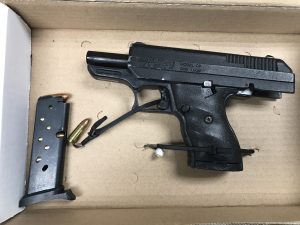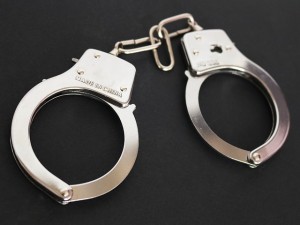 Carroll County Deputy Sheriffs recently arrested multiple individuals after an investigation of an alleged retail burglary turned into a multi-jurisdictional high-speed chase. The incident began when a concerned citizen called police upon observing a suspicious U-Haul van that was parked at a residence in Westminster. The van’s registration plate was apparently covered by a piece of cardboard. Officers were unable to immediately locate the vehicle, though a short time later it was observed in a retail store parking lot where several individuals were seen walking from the area of the vehicle to and from the store. Police surveilled the vehicle and the individuals and then decided to pursue the van as it pulled out of the store parking lot. A traffic stop was initiated, and officers ordered the driver out of the vehicle, but he allegedly refused and sped away. As the driver, a 56-year-old man from Baltimore, drove off he allegedly struck a deputy sheriff on the arm with his vehicle.
Carroll County Deputy Sheriffs recently arrested multiple individuals after an investigation of an alleged retail burglary turned into a multi-jurisdictional high-speed chase. The incident began when a concerned citizen called police upon observing a suspicious U-Haul van that was parked at a residence in Westminster. The van’s registration plate was apparently covered by a piece of cardboard. Officers were unable to immediately locate the vehicle, though a short time later it was observed in a retail store parking lot where several individuals were seen walking from the area of the vehicle to and from the store. Police surveilled the vehicle and the individuals and then decided to pursue the van as it pulled out of the store parking lot. A traffic stop was initiated, and officers ordered the driver out of the vehicle, but he allegedly refused and sped away. As the driver, a 56-year-old man from Baltimore, drove off he allegedly struck a deputy sheriff on the arm with his vehicle.
Deputies initially chased the van as it weaved in an out of traffic, allegedly reaching speeds of over 90 miles per hour. At some point the chase was terminated due to safety concerns for the public and the officers. Baltimore County Police was notified that the van was headed toward its jurisdiction and provided air support to locate the vehicle. Air support by way of helicopter is not always available in the event of a terminated high-speed chase, but due to the allegation of a felony assault on an officer the helicopter team jumped into action. The driver of the vehicle was ultimately detained and arrested in Baltimore City, and then transported to the Carroll County Detention Center. He was charged with resisting arrest, 4th degree burglary, assault in the second degree and assault in the first degree. A District Court Commissioner held the defendant without bail at his initial appearance, and a judge ordered the same during bail review. His next court appearance is scheduled for mid-June, though this preliminary hearing will likely be cancelled in favor of an indictment or information filed with the Circuit Court.
The defendant also faces a slew of traffic infractions for fleeing, running a red light, negligent and reckless driving, and multiple speeding tickets. Two other individuals were charged in the incident, but with less serious charges than the driver of the van. One was charged with 4thdegree burglary and released by the commissioner shortly after his arrest. The other was charged with 4th degree burglary and fraudulent personal identification to avoid prosecution under Maryland code 8-301. This offense, which carries up to 1 year in jail, is often charged with false statement to an officer, though false statement to an officer carries a 6-month maximum penalty under 9-501. The false statement cost the defendant a night of freedom, as he was held without bail by the commissioner and released by a judge the next day.
 Criminal Defense Lawyer Blog
Criminal Defense Lawyer Blog










